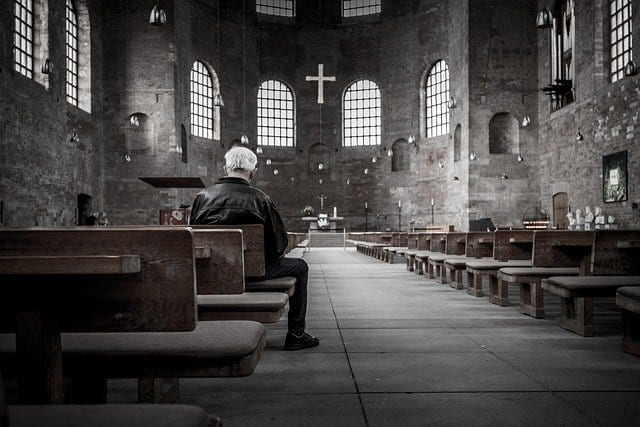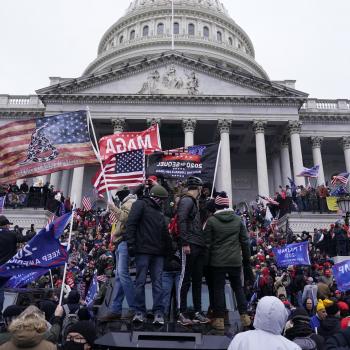Seems like the notion of “cancel culture” just took on a whole new dimension.
School — canceled. Vacation– canceled. Basketball tournaments and horse races– both the lifeblood of my people– canceled. Conferences, retreats, events of all kinds– canceled, eliminated, done-zo. In a matter of a few days, this thing has gone from “wash your hands and cover your cough” to a significant lifestyle change that most of us have not experienced in our lifetime.
Of all the cancellations, perhaps the most unnerving of all is the call, in many areas, to cancel church worship services. This seems counterintuitive in a time when people are anxious and need community; when people are facing economic uncertainty and need support; and when people are fearful and need the comfort of prayer and connection. And yet– we have to acknowledge that “large gatherings” are a hotspot for the spread of disease, and that church services can be pretty cozy experiences as far as personal space goes. For all of our best efforts to eliminate hand shaking and peace passing, and to modify communion practices, the best way to protect folks right now is to keep them apart.
It’s sad. It’s painful. It goes against every impulse of church leaders who proclaim faith in a God who is bigger than human fear. And it rubs up against the ego of those who think of themselves as hardy enough to weather any storm and get to church early to get the coffee going.
I get it. I really do. But sometimes, painful as it is, cancelling is the responsible, compassionate thing to do, and anything else is just hubris. Think of this illness as the black ice of liability. If there is a blizzard, you might be able to get to church. But if you can’t clear the sidewalks and the parking lots, do you really want to invite people into a hazard situation–the invisible threat that is just under the surface? This is like that. Sure, folks who are not sick are going to feel like they should still come to church. But they could be carrying something they don’t know they have yet, and pass it right on to their elderly or immunocompromised neighbor.
There are many unknowns here. There is unprecedented territory ahead, and nobody can say how long it might last. So if it does come down to canceling services at your place, here are some things to remember, and some ways to keep “being the Church,” even when you can’t be in the church building.
- Support your pastors. And elders, and trustees and board members– whoever has to make the really hard decisions about whether and how to gather in times of uncertainty. There is no road map for this, and there is no one right answer. Trust that the folks who ultimately make the call spent some time in prayer, discernment, and very difficult conversations. Know that they heavily weighed consequences, including your disappointment, and ultimately did what they thought was the best thing for the wellbeing of the community. Thank them for having your best interests at heart, and then
- Send in your pledge. This may seem like a small thing in the grand scheme right now, but trust me. It matters that you continue to get your offering in, as long as you are fiscally able. This is a great time to reexamine online giving options, or encourage folks to sign up for automatic withdrawal. Even the healthiest congregations can find themselves in the hole, and quick, after just a few Sundays of missed offerings. If you can’t give online, mail in a check, send a carrier pigeon, do what you have to do. Even if the building is empty, bills and salaries need to be paid; what’s more, you’re helping your church maintain mission commitments to the community in a time when that commitment is more important than ever.
- Check on your neighbors. You older neighbors, your neighbor on chemo, your neighbor whose kid relies on free school lunch, your neighbor who still has to go to work and could use help with childcare… Any time you help someone in your proximity, you are living out the values of your faith community. You are embodying what the whole gospel thing is about, which takes church out of the building and brings it to life for others. This is what we go to church to learn how to do– it is ‘for such a time as this’ that you have spent all those other Sundays in worship.
- Pray for your church family. And send notes. Make phone calls. All the things that we do for shut-ins, do for each other now that we are all shut-ins, so to speak. We are one body, even when that body is not together in the flesh. There are plenty of ways to stay connected in spirit, and care for each others’ spiritual needs.
- Practice Sabbath. For some, this shutdown of life as we know it is going to cause significant economic hardship. In the spirit of #3, care for your neighbor as best as you can. In the meantime, recognize if your own discomfort is just inconvenience, and keep that perspective. Recognize that downtime can be a gift– an imposed sabbath of time to sit still and be with your family, without the usual rush of places to be and things to accomplish. Read together; prepare meals together (can you share with a neighbor? #3 and repeat); maybe even binge watch some Netflix together. When’s the last time everybody was home for this long? Talk about what you can learn from this season. Talk about your blessings. Play a game. Make something. Listen to music. It really doesn’t matter. Any of these things can be worshipful in their own way, if by ‘worship’ we mean rest and renewal by way of connecting with God and others.
“Cancel culture” might have a whole new meaning; but “let the Church be the Church” still stands.













